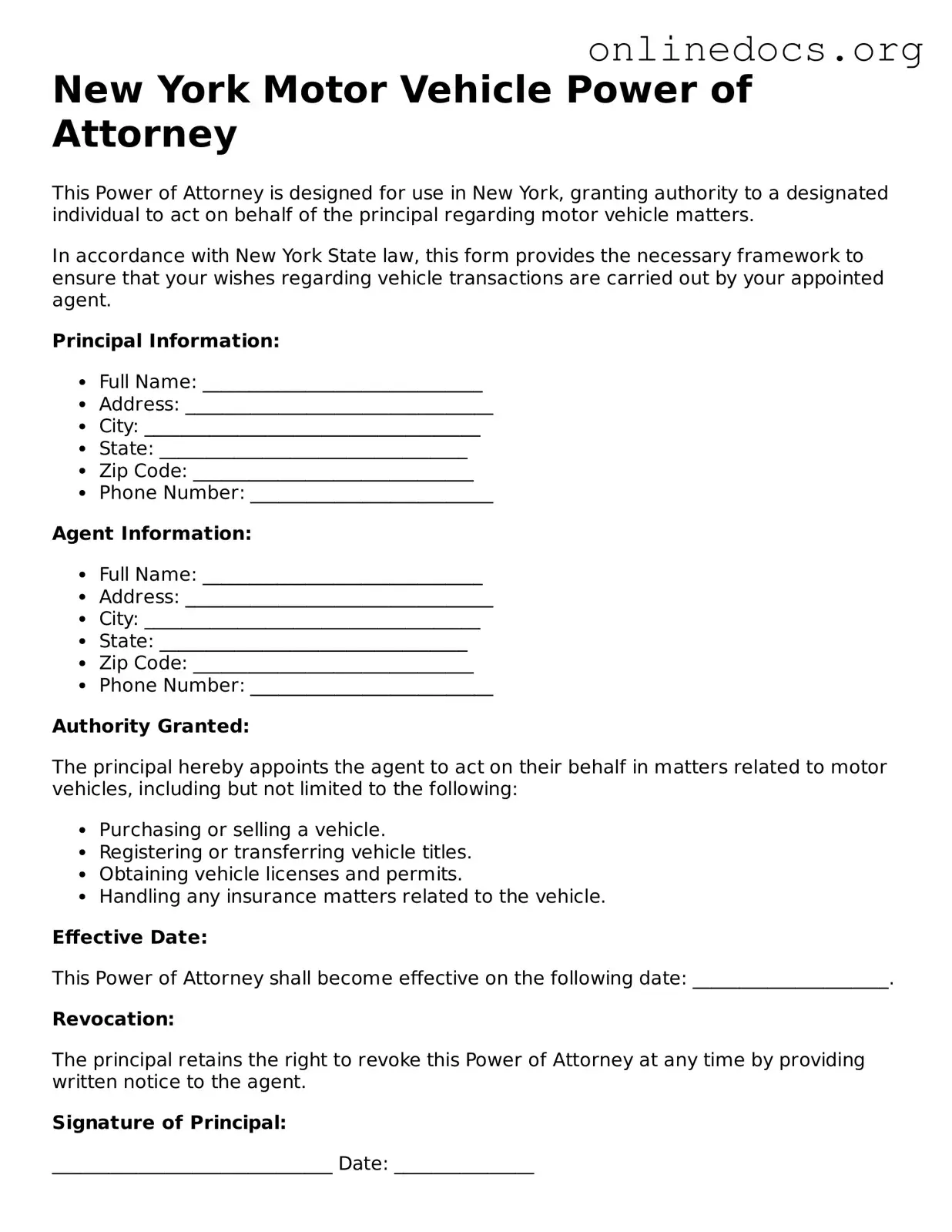Filling out the New York Motor Vehicle Power of Attorney form can be straightforward, but mistakes often occur. One common error is not providing the correct name of the principal. The principal is the person granting the power of attorney. If the name is misspelled or incomplete, it can lead to complications.
Another frequent mistake involves the selection of the agent. The agent must be a trusted individual who can act on behalf of the principal. Choosing someone who is not reliable or does not understand the responsibilities can result in poor decisions regarding the vehicle.
Many people overlook the importance of signing the form. The principal's signature is crucial for the document to be valid. Without it, the power of attorney is ineffective, leaving the agent without any authority to act.
In addition, failing to date the form can create confusion. A date indicates when the power of attorney becomes effective. If the date is missing, it may lead to disputes about the timing of the agent's authority.
Another mistake is not specifying the powers granted to the agent. The form allows for a range of actions, from selling the vehicle to transferring registration. If these powers are not clearly defined, the agent may not be able to perform necessary tasks.
People sometimes forget to check the box indicating whether the power of attorney is durable. A durable power of attorney remains effective even if the principal becomes incapacitated. Omitting this detail can limit the agent’s authority when it is needed most.
Some individuals fail to provide contact information for both the principal and the agent. This information is essential for identification and communication purposes. Without it, the process may stall or encounter unnecessary delays.
Not keeping a copy of the completed form is another oversight. Having a copy ensures that both the principal and the agent have access to the document. It can be vital for reference and verification in future transactions.
Lastly, neglecting to review the form for accuracy before submission can lead to problems. Double-checking all entries helps catch any errors that could invalidate the power of attorney or cause issues later on.
